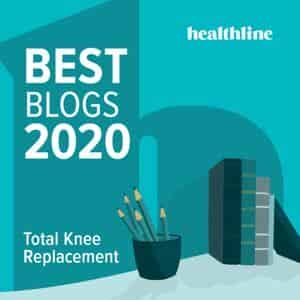Preformed cement spacers may aid revision THA without increasing mechanical complications
Preformed gentamycin spacers provide patients with acceptable function between revision hip arthroplasty stages, according to a prospective study.
Christophe Pattyn, MD, PhD, and colleagues at Ghent University Hospital in Belgium prospectively followed 61 consecutive patients with infected hip arthroplasties. The patients underwent two-stage revision with preformed spacer implantation.
Between the two stages, the mean Harris Hip score was 39.9 and the Merle d’Aubigné was 7.6. In all, 46 patients (75.4%) left the hospital between stages. The spacer dislocated in 16.4% of patients. The investigators saw no cases of spacer breakage.
“Preformed cement spacers provide acceptable functional outcome between revision hip arthroplasty stages and facilitate the surgical procedure without increasing mechanical complication rates,” the authors wrote.
Perspective:
Christophe Pattyn and his coworkers at the department of Orthopaedic Surgery and Traumatology at Ghent University Hospital investigated two-stage revision in periprosthetic infection of the hip using a commercially available monoblock spacer loaded with gentamycin. They evaluated functional outcome and spacer-related adverse events as well as the re-infection rate after a mean follow-up of 3 years (9 to 84 month).
The results show that the spacer-related complications were mainly dislocations (16.4%) and extreme pain (1.6%), while femoral fractures (which occurred in 11.5%) could not been clearly related to the spacer implantation. Only two patients (3.3%) suffered from a re-infection. A correlation between the extent of the acetabular defect and the dislocation risk was seen only in large bone deficiency (Paprosky 3 and 3B).
The authors point out that 75.4% of the patients were able to leave the hospital between the two procedures and that the functional outcome in the period between the stages was acceptable. The fact that none of the metal augmented spacers fractured was seen as an advantage.
The data being presented give a substantial input to the controversial discussion of the topic. The article presents a realistic assessment of the two-stage procedure using an antibiotic-loaded cement spacer in orthopedic device-related infections. The reported high dislocation rate is not surprising and possibly associated with the limited facility to customize the spacer corresponding to the individual defect. Important is the fact that most of the dislocations could be treated conservatively.
The re-infection rate is comparably low, a parameter which might be influenced by the spectrum of microorganisms responsible for the infections.
The delineated approach represents a commonly used treatment option and the most applied procedure in Germany for this indication. The results justify the further use of the method but demonstrate, at the same time, possible disadvantages. As an alternative, one-stage revision could provide more advantages for the patient and even health economics. But, there are still not enough substantial and evidence-based data which can reveal the advantage of one of the methods.
Preformed gentamycin spacers provide patients with acceptable function between revision hip arthroplasty stages, according to a prospective study.
Christophe Pattyn, MD, PhD, and colleagues at Ghent University Hospital in Belgium prospectively followed 61 consecutive patients with infected hip arthroplasties. The patients underwent two-stage revision with preformed spacer implantation.
Between the two stages, the mean Harris Hip score was 39.9 and the Merle d’Aubigné was 7.6. In all, 46 patients (75.4%) left the hospital between stages. The spacer dislocated in 16.4% of patients. The investigators saw no cases of spacer breakage.
“Preformed cement spacers provide acceptable functional outcome between revision hip arthroplasty stages and facilitate the surgical procedure without increasing mechanical complication rates,” the authors wrote.
Perspective:
Christophe Pattyn and his coworkers at the department of Orthopaedic Surgery and Traumatology at Ghent University Hospital investigated two-stage revision in periprosthetic infection of the hip using a commercially available monoblock spacer loaded with gentamycin. They evaluated functional outcome and spacer-related adverse events as well as the re-infection rate after a mean follow-up of 3 years (9 to 84 month).
The results show that the spacer-related complications were mainly dislocations (16.4%) and extreme pain (1.6%), while femoral fractures (which occurred in 11.5%) could not been clearly related to the spacer implantation. Only two patients (3.3%) suffered from a re-infection. A correlation between the extent of the acetabular defect and the dislocation risk was seen only in large bone deficiency (Paprosky 3 and 3B).
The authors point out that 75.4% of the patients were able to leave the hospital between the two procedures and that the functional outcome in the period between the stages was acceptable. The fact that none of the metal augmented spacers fractured was seen as an advantage.
The data being presented give a substantial input to the controversial discussion of the topic. The article presents a realistic assessment of the two-stage procedure using an antibiotic-loaded cement spacer in orthopedic device-related infections. The reported high dislocation rate is not surprising and possibly associated with the limited facility to customize the spacer corresponding to the individual defect. Important is the fact that most of the dislocations could be treated conservatively.
The re-infection rate is comparably low, a parameter which might be influenced by the spectrum of microorganisms responsible for the infections.
The delineated approach represents a commonly used treatment option and the most applied procedure in Germany for this indication. The results justify the further use of the method but demonstrate, at the same time, possible disadvantages. As an alternative, one-stage revision could provide more advantages for the patient and even health economics. But, there are still not enough substantial and evidence-based data which can reveal the advantage of one of the methods.



 United Kingdom
United Kingdom
